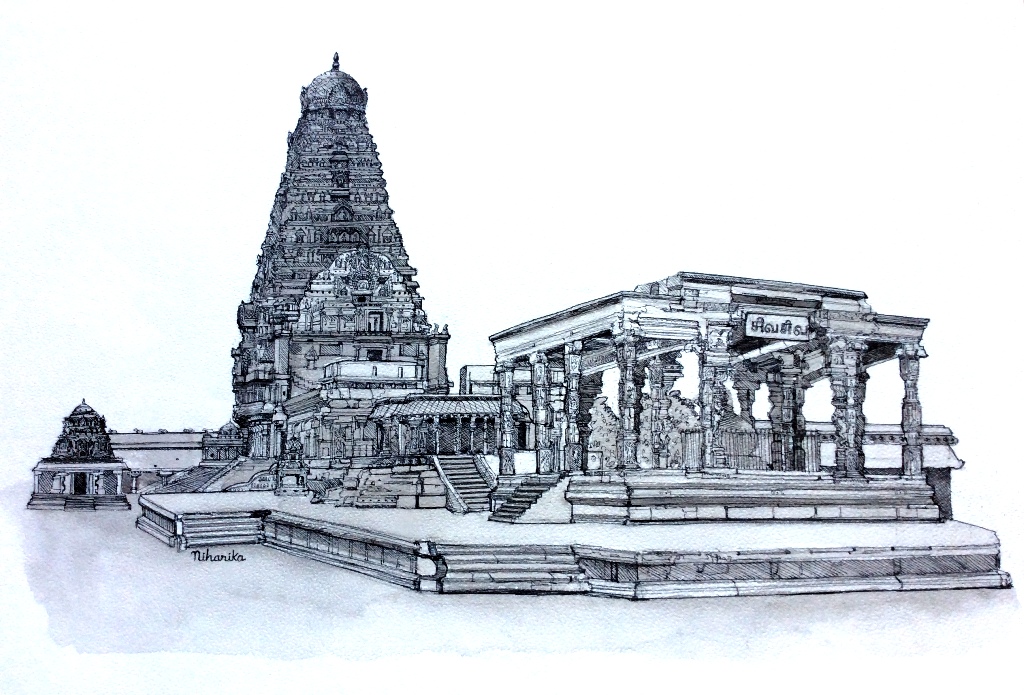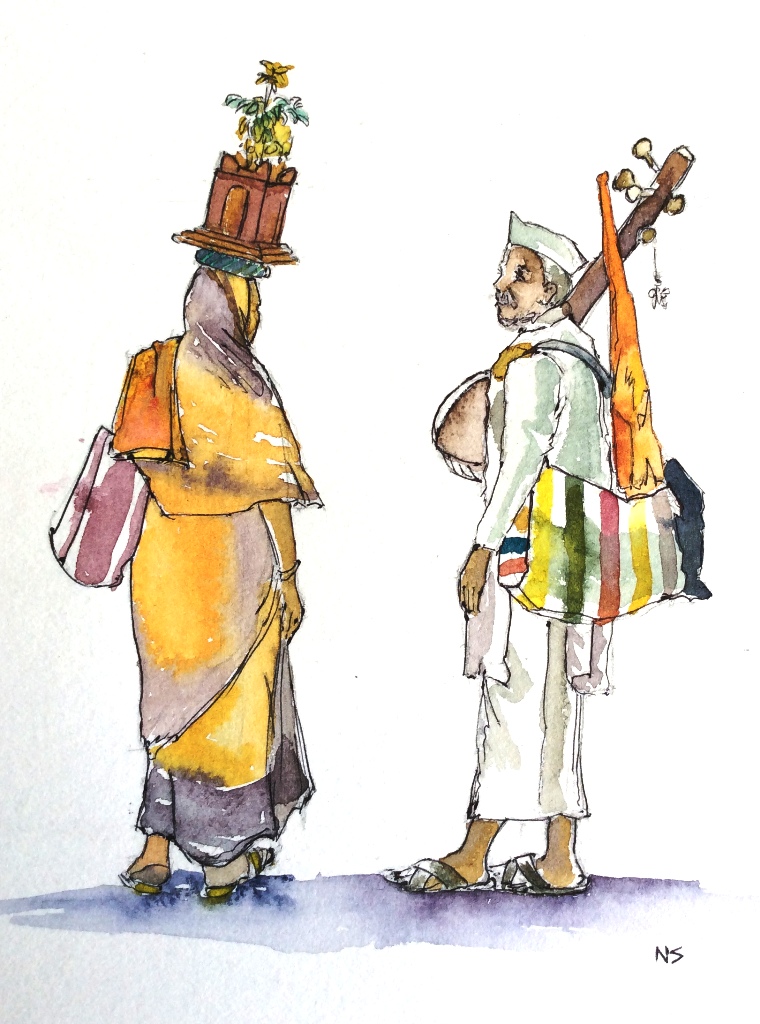In conversation with Radha
 |
| Waiting |
Women with crying babies and old men in little shorts wait
patiently for their turn. The garish, brightly painted Anganwadi is brimming
with people today. A school bench is the
makeshift waiting room for patients, while little ones play on in their own universe
of tiny claypots and pans, beads and slates on the other side of the room. The
doctor, in a plastic chair is attending to a drunk man who has a skin allergy.
Old men and women, weighed down, bent double, sit on chairs and carpets waiting
for the doctor and the nurse to attend to them. A young woman in her teens in a
brightly patterned nightie pats her wailing baby to comfort him.
This is a small village in Doddaballapura Taluk in the
Bangalore rural district of Karnataka. Every Thursday, People wait in line for the
mobile health van. It is a small village and I am alarmed to see few youths.
Where have they gone? Working in the farms? Yes, a few.
But most of them are
off to Bangalore and its suburbs with its garment factories and the lure of
better, bigger opportunities. While the ones left behind deal with the dinginess
and filth that Bangalore has dumped in the surrounding villages, the others
chase Bangalore for its glitter and glamour.
I feel ashamed when a tottering old woman offers me her
chair and crouches down on the cramped carpet where a friend has moved to make
space for her. I protest, but there it
is. Every time I have been to a village, as a journalist or as an interviewer,
I have faced this unconditional respect for the city dweller - misjudged
respect far more than the city and its residents deserve.
For a long time, this
village has been an unwilling neighbour to an unwanted guest – A landfill. Bangalore’s
landfill, to be precise. All of our sanitary napkins, takeaway dinners with all
the cute tiny little plastic boxes that make life SO convenient land up here. I
wonder how many takeaway dinners these villagers have had in their life, as
they sit here blinking with bleary eyes in the shade of the anganwadi.
My friend and I have come on this visit to know more about
the mobile health Clinic service started in conjunction with two NGOs – United
Way Bengaluru and Grameena Abyudaya Seva Samsthe. Every day of the week, four
medical professionals – One doctor, two nurses and a driver drive down to three
to four villages to attend to their medical and health needs. I accompany the team , trying to document the
day’s visit with sketches to be used as reference for a book.
This is my first time and it is awkward to sketch with many
pairs of eyes looking on with curiosity. I slip away unnoticed outside the
anganwadi to have a look at the Mobile Health Van. People are milling about
with little slips of Prescriptions written by the Doctor. The whole service and
the medicine is free to these villagers.
This is when I meet Radha. She beckons me inside the van
with a warm smile on her face. She is neatly dressed, a garland of fresh
jasmine in her hair.
 |
| Radha |
Radha is a nurse with the mobile health clinic. She tells me
they have a schedule for each day and cover about four to five villages in a
day.
“The villagers wait for us, madam. That is how much they
need healthcare services here. The closest PMC is far from here. And there are
only two buses running through this village – One in the morning and one late
in the evening. Every Thursday we are in this village at 9:30 in the morning.
We attend to all the patients and then after the last one is done we move on to
the next village. If their stock of medicines finishes they have to wait till
we are here the next week. There are no pharmacies to attend to them, you see. ”
I mull over what she says and contrast this with my house in the city. Within a
kilometre there are more than ten pharmacies. At least one pharmacy in every
other street.
While talking to me, she doles out medicine to the patients.
She interrupts herself in between to attend to patients.
“I have swallowed this one, amma. I have swallowed this one
too.” An old man in a meek tenor answers her questions as she asks him about
what he had done with last week’s medicine. All instructions are verbatim and I
wonder if the patients are able to follow. There are some old women who listen
to directions on behalf of their sons and daughters away on work. Won’t they
get jumbled up?
There are villagers who turn up from time to time to grin
sheepishly at the nurse and ask her for medicines. But Radha is strict. She
tells them, “No medicine without prescription”
“We turn on the Siren so that people can know that we are
around, in the vicinity. People often hail us from the fields on the way and we
stop to attend to them.”
I am alarmed to find the old and young alike ask for
medicine for asthma. Radha tells me the landfill near the village has led to
many respiratory disorders and skin diseases. The smell often carries for days
together, not to mention the swarms of mosquitoes and insects that infest these
villages because of the dump yard.
 |
It is a picturesque village with areca farms lining the
narrow roads and beautiful green hills in the distance. But the doctor tells us
there is more than meets the eye. The air is polluted and the ground water is
contaminated. As one villager tells me, “We have no option but to drink this
water. How then can we get better health?”
This village of around 150 citizens has a group of four
medical health professionals looking after them.



Comments
Post a Comment